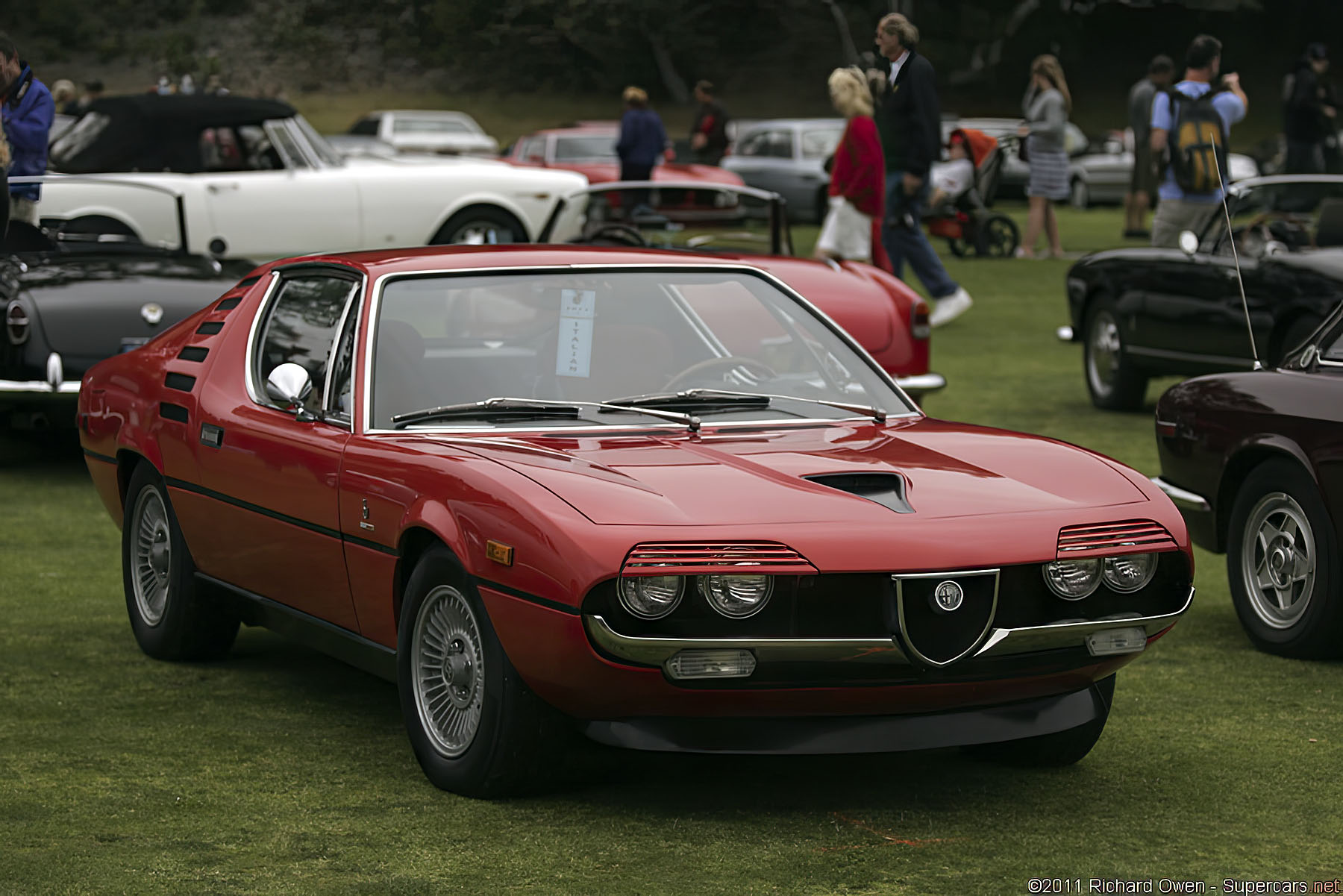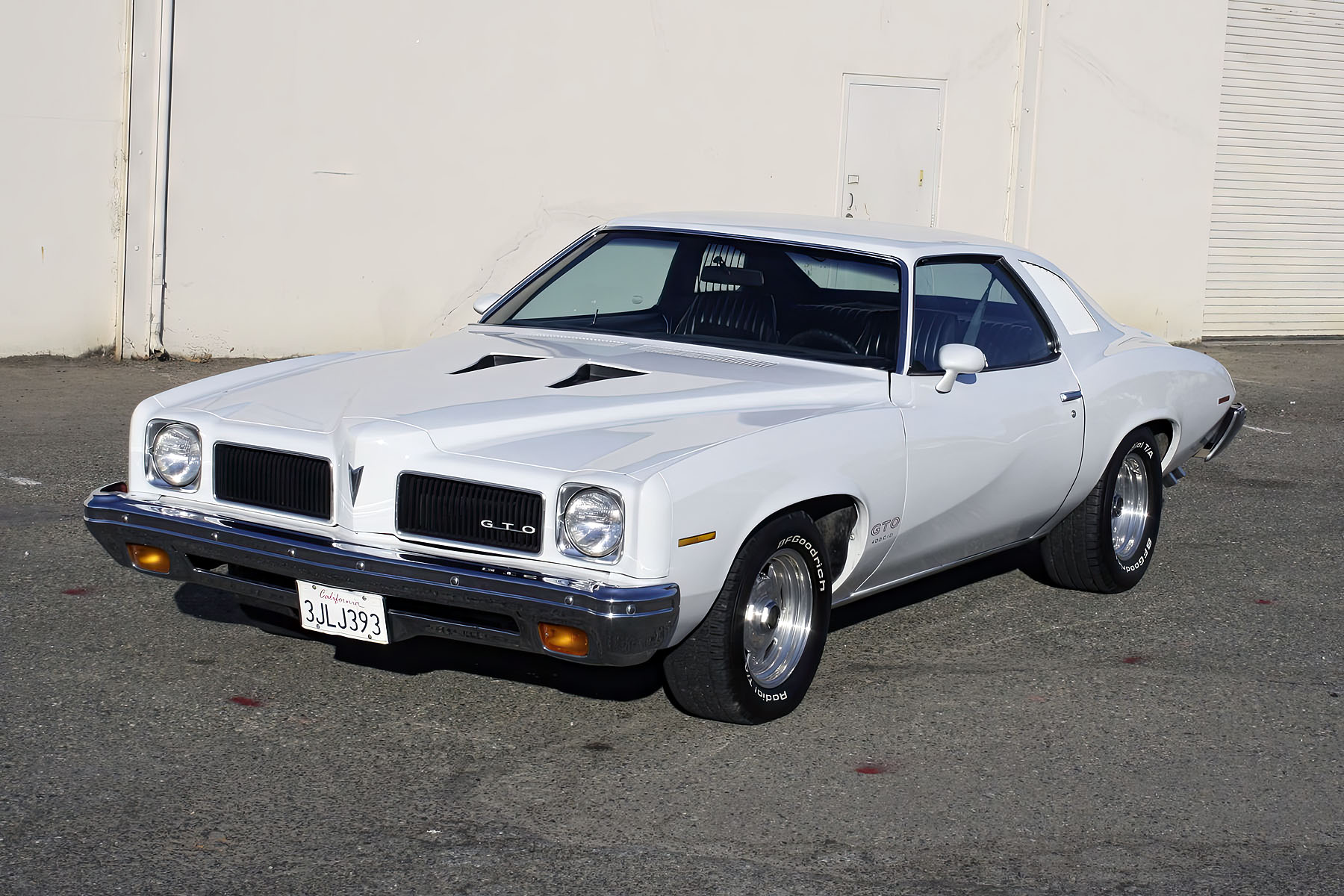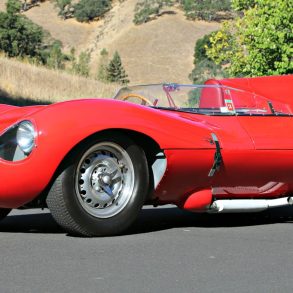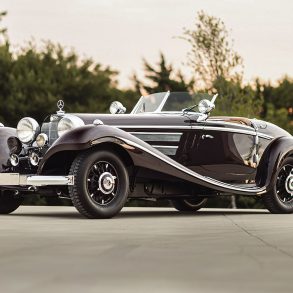Designed for aircraft
Rooted in aeronautics but more commonly known for its automotive applications, the NACA (not NASA) duct is a timeless piece of functional design that has gone through decades unchanged, never needing to adapt to prevalent trends. The NACA duct was conceived in 1945 by aeronautical engineers at the National Advisory Committee for Aeronautics, a government body that would later become NASA. The duct was intended to direct air into jet engines without creating additional drag, but the design wasn’t as effective as needed in aeronautical use. However, as NACA declassified the invention in 1951, the duct was soon used in the automotive world. Being submerged into the bodywork, NACA ducts don’t increase drag like lifted scoops do while its design made it great for both air supply and cooling.
Early testing
Naturally, the first experiments with the freshly declassified invention were in racing. Several blurry black and white photos show Le Mans-ready 1951 Talbot Lago T26 GS 11055 and 1955 Connaught B Type Streamliner being the first cars to use them, but it was Frank Costin’s 1956 Vanwall F1 car that is widely credited as being the first car to adopt a NACA duct. An aeronautical engineer by trade, Frank Costin went on to use the NACA duct on his subsequent projects too, and by the early 1960s the novel air inlet was becoming increasingly present on racing cars of all kinds, slowly catching on in the automotive mainstream too.

The 1970s and the 1980s were the years in which the NACA duct secured its place in the automotive world. Both highly functional and cool on the era’s geometric cars, the duct was a key feature on some truly remarkable machinery, thus becoming an icon itself. Later on, as design trends reverted from boxy to curved and as aerodynamics advanced, the famous duct largely gave way to more organic free-form openings, but it wasn’t completely written off either.
Common applications
In fact, NACA ducts are more common than you might assume, and you’d be surprised how many regular cars use them somewhere on their undersides, cooling gearboxes or differentials hidden from our view. But, when a sports car has a NACA duct somewhere on its body, the strong visual appeal comes into play and it becomes a universally recognized symbol of speed and power. That being said, here’s a brief visual history of NACA ducts told through ten sports cars using them in their own unique ways throughout the decades.
1 Lotus Elite Super 95 (1960)

Given Frank Costin’s prolific use of NACA on various racing cars, it seems logical that the first production car equipped with a NACA duct came from Britain as well. Costin and Colin Chapman of Lotus fame were cooperating during the 1950s and the 1960s, especially on formula cars, but his contribution covered a number of road cars as well.
One of those was Lotus Type 14 Elite, where Frank Costin not only helped the final design be more aerodynamic, but he also used his trademark, the NACA duct. The Elite originally sported a clean hood, but some variants had a NACA duct to help the 1.4-liter engine achieve more power. That being said, the single offset NACA duct on the left side of the hood was there to inject air into dual side-mounted carburetors. Originally, Elites equipped with NACA ducts were factory-prepared for racing, but the more potent Super 95 Elite road car had it as well. This way, the NACA duct creeped its way onto production cars and little did anyone know that it would soon become more than just an efficient air inlet.
2 Alfa Romeo Montreal (1970)

When Alfa Romeo presented a car at the 1967 Universal Exposition in Montreal, it was clear that Marcello Gandini created another masterpiece. The sleek Montreal boasted a slippery silhouette with just the right amount of memorable details. It boasted louvered headlights, bullhorn-shaped doors similar to the Miura and C-pillars decorated with six horizontal air vents.
The production model came out in 1970 and in transition from concept to production stage, the roadgoing Montreal got a prominent hood mounted NACA duct. Though it played a big part when it came to the looks, the duct itself was not particularly functional though. The 2.6-liter V8 engine scooped air alongside the cylinder banks, so the large NACA duct was not functional at all. Still, the Montreal is living proof that NACA ducts are really cool, even if they don’t work.
3 Pontiac GTO (1973)

Coupled with safety concerns due to the unhinged 1960s, the 1971 fuel crisis drove the American automotive industry into the malaise era. Still, Detroit was adamant to preserve an appearance of speed in spite of rapidly declining power coming from good ol’ American V8s year after year. Such is the case with the 1973 Pontiac GTO, a Pontiac Le Mans-based coupé and a mere shadow of its former self.
Not only did the GTO badge suffer due to the unfavorable automotive climate, but it also fell within the brand’s hierarchy too, giving way to the Firebird family as the flagship Pontiac sports car. The 1973 GTO produced up to 270 horsepower, a far cry from the pre-malaise cars. The hood featured dual NACA ducts, placed there for optional ram air induction. In the end, only ten cars actually got the ram air from the factory, deeming the ducts obsolete. So, though the 1973 GTO wasn’t the greatest car around, NACA ducts at least made it as cool as a malaise muscle car could get.
4 Lamborghini Countach (1974)

NACA ducts might come unnoticed from time to time, but that’s definitely not the case with the Lamborghini Countach. Huge side-mounted NACA ducts are so integral to this car’s design that it’s hard to imagine that the 1971 LP500 prototype did not have them. While Gandini’s wedge-shaped design study sported a clean side profile, Paolo Stanzani and his team had to deal with troubles like an air hungry V12.
Addressing the V12’s need to breathe, Gandini offered the solution in form of gigantic dual NACA ducts aiding the periscopic air inlets. Apart from feeding dual radiators with fresh air, these inlets housed door handles too. In most cases, the ducts were finished in matte black, which only made them stand out even more, contrasting the supercar’s bold colors. After the Espada and Jarama, as well as the aforementioned Montreal, Marcello Gandini’s love affair with NACA ducts really reached its pinnacle with the Countach, but it was not over.
5 Renault 5 Turbo (1980)

Unlike the Countach ones, this NACA duct is easy to miss as it’s only visible from a lesser portrayed angle, but that doesn’t make it any less iconic. Renault 5 Turbo super-supermini is a rallying icon and it started off as a Renault 5 with scrambled internals. Instead of a front-mounted and often modest powertrain, the Turbo got a mid-mounted turbocharged 1.4-liter inline-four powering the rear wheels, transforming the cute hatchback into a fierce and agile mini monster.
Such radical mechanical alterations resulted in substantial overhaul of the bodywork too and here came Gandini again. The front got a more aggressive look and the fenders, especially the rear ones, were widened to deal with increased track and accommodate wider, grippier wheels. And the NACA duct? It was on top of the left rear fender, directing air into the intercooler and it was present on both the hardcore Turbo and the somewhat tamed Turbo 2.
6 Ferrari F40 (1987)

It’s common knowledge that the Ferrari F40 is a milestone supercar in a number of ways. A thorough evolution of the 288 GTO, the F40 set a benchmark for 1980s performance, while its assertive looks made it a poster car of the decade. Finally, all that combined made the F40 a timeless icon.
The features that defined the F40’s iconic looks are pop-up headlights, a massive integrated rear wing and NACA ducts – not one, not two, but six of them. The most prominent pair is the one mounted on the sides, cooling the rear brakes, followed by two small ones on the front hood, placed for directing air into the cabin. Finally, the third pair is on the rear hood, gathering cool air for twin oil coolers.
7 Dodge Viper SR II (1996)

The original SR I Viper debuted with a clean hood design, whereas the NACA duct appeared in 1996 with the introduction of the SR II generation GTS coupé. The SR II roadster initially retained the clean hood for another year, getting a NACA duct in 1997. Though the Viper was one of the most curvaceous cars out on the market with its free flowing design and its double-bubble roof, the old school appeal of the NACA duct worked just perfectly on America’s wildest sports car. Moreover, the inlet was functional, scooping fresh air for the massive 8.0-liter V10.
Onwards, the Viper had an on-and-off relationship with NACA ducts, and let’s elaborate on that. The third and fourth generation Vipers, named ZB I and ZB II respectively, ditched the NACA duct in favor of an oval air inlet, which was just one part of a major technical and visual overhaul. Finally, in 2012, the fifth and final Viper came out, this time just as a hardtop coupé, and it once again had a fully functional NACA duct.
8 Nissan R35 GT-R (2007)

When it arrived in 2007, the Godzilla had pretty big shoes to fill. A successor to the Skyline GT-R dynasty, Nissan’s halo sports car not only had to prove itself as a capable road and a race car, but also to live up to the reputation of a giant slayer. Some sixteen years later, as the R35 GT-R is still evolving, we can safely say it did a stellar job for the brand’s image and the automotive culture all around the world.
The R35 GT-R relied on a number of tricks to punch above its weight. While some, like the ATTESA E-TS all-wheel drive, are nerdy and immensely complex, some are simple, straightforward and outright cool. Yes, we’re talking about twin hood-mounted NACA ducts. As a piece of mid-century technology on a high-tech supercar killer, these NACA ducts direct air onto the turbines, cooling them in the process.
9 Porsche 911 GT3 RS 991.2 (2018)

An evolution of the 991 GT3 RS, the updated 991.2 generation 911 GT3 RS was not the first time Porsche used a NACA duct as the 924 Turbo had one cooling the turbocharger. Porsche’s first use of NACA duct on a road car came in the late 1970s when NACA duct was a must-have in the fast car business and was followed by dual NACA ducts on the 968 Turbo S. After this elusive front-engined sports car, there was a long hiatus before the next Porsche came equipped with this aerodynamic feature.
The next roadgoing Porsche to rock the NACA duct came in 2018, and as expected, dual hood-mounted NACA ducts were not there just for show. A hardcore, track-ready sports car needs all the air in the world, so these two ducts are used for cooling the front brakes. Interestingly, the air reaches the brakes through the frunk cover panel.
10 GMA T.50S Niki Lauda (2021)

From a genius who gifted us the McLaren F1, the GMA T.50 is Gordon Murray’s 21st century ode to the analog hypercar. It has all the key ingredients of a true Gordon Murray automobile: central seating position, a naturally aspirated V12, ingenious engineering and understated, deeply pragmatic design. As such, it is an ode to analog supercars and a true successor to the absolutely iconic McLaren F1.
Then, there’s also the same car turned up to eleven. GMA T.50s Niki Lauda is a track-only variant, thoroughly lightened, more powerful and aerodynamically optimized. It is also a living testament to NACA duct timelessness as Sir Murray and his team seamlessly incorporated it into a modern, organic and purpose-driven shape. That being said, GMA T.50S has triple NACA ducts. The central one supplies the cabin with fresh air and it’s flanked by two smaller ducts, used to cool the front brakes.
Original article HERE










